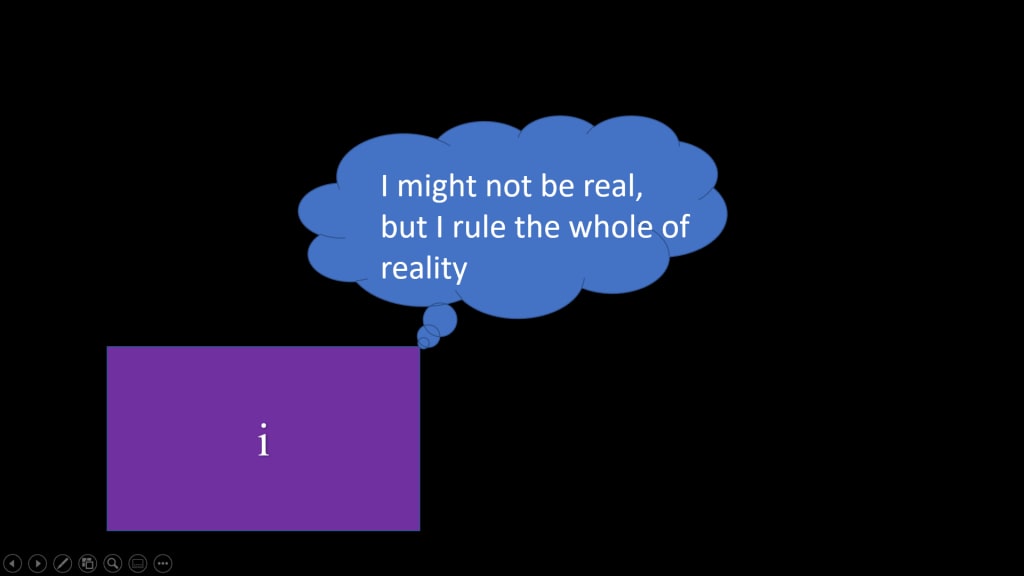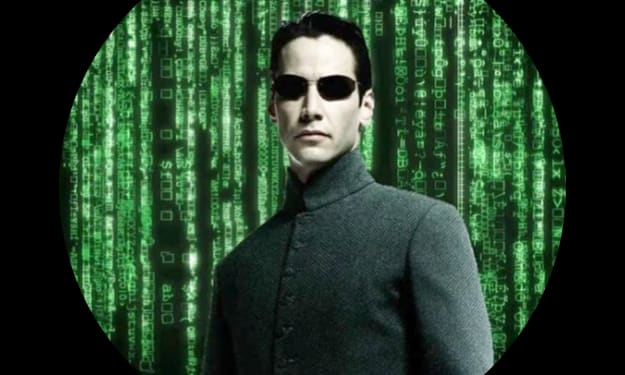Demystifying imaginary numbers
A introduction to imaginary and complex numbers, that doesn't have a single equation

Imaginary numbers are some of the most obscure concepts taught at the end of sixth form. But what are they? How are they useful? And where do they come from? These are questions I shall attempt to explain without using any equations to furnish the discussion. Getting lost in mathematics is exciting, but this probably puts more people off than it does encourage people to read on. Since this is an introduction, it is best to keep the math light and let the ideas speak for themselves.
To get to imaginary numbers, firstly we have to define what we mean by real numbers. This will make understanding what makes imaginary numbers so cool, all the clearer. So what makes a number real? And what property do all real numbers have in common?
At a first attempt at a definition, we could fall into a linguistics trap. We could, as the name might suggest, define real numbers to be all numbers which exist in the physical world. We can of course hold one apple, or cut an apple into 3 pieces and hold a third of the whole. In that sense fractions and whole numbers seem to definitely exist. But what about negative numbers? I cannot hold less than no apples, nor can I attain a speed where I move slower than not moving at all. As a matter of fact, the ancient Greeks even had difficulty with even calling zero a number, for how could nothing be a thing?
This illustrates a key property of mathematics. It is focused on abstract ideas and applying these to the physical world, but it does not need to ‘exist’ in physical sense, to be useful. We will come back to this point shortly when considering imaginary numbers but it is worth bearing in mind.
Negative numbers do have analogies in the physical world, for instance the concept of debt. If you have to put money into the bank before you can hit the zero mark, the negative/positive division can be thought of as a statement about owing vs. owning the money. Similarly recently me and a friend programed up a card game, where we forgot to tell the computer that cards risks could not go below zero. In this case if you lost in this slot, you would loose a negative number of life points, and therefore effectively gain life points. Consequently you could actually win in a slot by loosing. Wonderfully, it was a accidental bug which presented so many interesting playing options, so we kept it in. In this case the negative/positive distinction could be defined as gaining/loosing life points. Further more the fact that loosing negative life points, gives you life points, is encapsulated in the statement that a negative lot of negative quantity, is itself a positive quantity.
So if we have a negative number and square it (that is multiply it by itself), we must end up with something positive. Similarly, if we have a positive number and square it, we also must end up with something positive. After all, if your boss doubled your pay and you found out on your pay roll that this meant that you owed the boss money, you would be very confused by his arithmetic logic.
From this, we can conclude that mathematics is based on common sense and consequently can be questioned. A negative lot of a negative quantity is defined to result in a positive quantity, because it makes sense to us in the way we think about negative numbers. There is nothing fundamentally wrong with a arithmetic where a negative number squared is not positive, its just we don’t find this arithmetic all that intuitive and it would require a different way of thinking about multiplication. And yet, just because we define something to be true, does not mean it is arbitrary, since the definition is chosen such that it defines a useful concept.
Furthermore, we have now identified something that unites all real numbers. For every real number (apart from perhaps zero), when it is squared, a positive result is obtained. Indeed as described above, the way we think about multiplication makes it very hard to conceive of any number where this is not true. Give it a go, and you’ll see what I mean.
However we have seen that mathematics is free, within certain restraints, to define things into existence since all these ideas are in there beginning but concepts in the mind. We are defining ideas, we are as yet not trying to say anything knew about the world we live in. Where there these new ideas turn out to be useful is something we can only know, once we have come up with them and analyzed their properties.
So let us define a new type of number, which when squared, gives a negative number. Numbers which belong to this new type, we call imaginary. We can more directly define an imaginary number as the square root of a negative number, which is equivalent to what has just been said, but with slightly different wording.
The fact that these imaginary numbers have a very unique feature of squaring resulting in negative numbers, makes them so fundamentally different that we can not order them from biggest to smallest on the real number line. We have to therefore place them on their own unique number line.
Now we have real and imaginary numbers, we can make another type, almost a hybrid. This hybrid is the sum of a real and imaginary part. We call these numbers complex, although in truth there is nothing all that complex about them, they simply take some getting used to. We represent complex numbers by giving it a point on the complex plane. The complex plane consists of all possible complex numbers, and a given complex number is assigned a single point on this plane. From here we can do all kinds of wacky things with complex numbers, from finding the logarithms of negative numbers to calculating really difficult integrals by translating them to the complex plain and making use of the residue theorem. However I will leave all the exciting details to a book on complex analysis, and instead turn to our second question. Why are imaginary (or complex) numbers useful?
One could answer this by going into how they first appeared. History, sadly, does not give a very exciting story for it involves discussing solutions to cubic equations, which is not a frequent enough problem to really excite a many physicists. So lets look at a more common problem, the differential equation.
Differential equations describe most things in the universe. They relate how one variable changes continuously with respect to another. Newton’s second law is a differential equation in disguise, Schrödinger’s equation is yet another differential equation and Maxwell's laws are themselves differential equation written in terms of vector calculus. Nearly everything is in fact a differential equation and so it comes as no great surprise, that physicists are greatly interested in solving these.
When solving second order or higher order types, one hits hot water very quickly. One very quickly discovers that the roots of the secular equation which is used to give solutions to these differential equations, tends to be complex. This means that the solutions of very real world systems, are given in terms of complex numbers!
Well specifically, the solutions are real numbers raised to the power of complex numbers. But what the hell does it mean to raise a real number to a complex number? If we have two apples, we can say well two times two apples should be four apples. That is 2 squared equals 4. But what the heavens does it mean to multiple something by itself a complex number of times? How do we deal with this!
Going back to a bit of cool mathematics known as the Taylor series, saves the day. Using it we can show that describing a complex number as a point on a complex plain, is more than just a geometrical illustration.
It turns out by making use of Taylor’s theorem, that any complex number can be described as the point at the tip of a vector. We can consider a vector as an arrow which goes out from the origin of a coordinate system, and has some magnitude (that is length) and lies at some angle relative to a given axis. Specifically Taylor expansion results in Euler’s identity which allows us to think of this vector lying on the complex plane, as having a real part and an imaginary part. Further it allows us to calculate what the size of these are, and comparing their relative size one can work out the angle that the phasor must lie at. Consequently Euler’s identity gives a geometric way to think about complex numbers, and consolidates the complex plane as a serious idea which is going to stick around.
In fact every time a spring oscillates up and down, you can predict that motion by solving Newton’s second law for the system and then applying the mathematics above to interpret the complex roots you will meet along the way.
Differential equations are the main reasons to worry about complex numbers, but they appear in other places to. For example when considering light bouncing back and forth eternally, from one surface to another, you could consider after an infinite number of oscillations how much light will pass through one side. Since light bounces back and forth, we assume both sides has some reflectivity to it so not all the light will escape. When you do this a geometric series appears, although to with complex numbers describing the phase the light wave picks up when its reflected back. Complex numbers also appear in quantum mechanics when your worrying about spin, which is something that neatly pops out of Dirac’s equation. And you guessed it, Dirac’s equation contains imaginary numbers in it from the get go!
Complex numbers appears all over the place in physics. It is hard to imagine physics without them. Hopefully now you feel all fired up, and this has shared something of a the wonder of what is a truly fascinating topic. There is a lot of math’s books out there which are more than up for the task of providing a far more detailed description than I have here. But one closing thing to say, is that whilst imaginary numbers might not be real in the same as positive numbers might be, we could not have reality without them, or at least not reality as we know it.
About the Creator
Reality Detective
Recently finished a Physics course at university. Now going into writing and exploring the world with the lens of fantasy and science.
Enjoyed the story? Support the Creator.
Subscribe for free to receive all their stories in your feed. You could also pledge your support or give them a one-off tip, letting them know you appreciate their work.






Comments
There are no comments for this story
Be the first to respond and start the conversation.